Sushi Go! How to Play Quick Links: | Objective | Setup | Playing the Game | Cards | Winning the Game | Variant Games | FAQ | Components |
Objective of Sushi Go!
The objective of Sushi Go! is to collect sets of cards each round to score more points than the other players.
Setup for Sushi Go!
- Shuffle all of the cards together.
- Deal out cards to all of the players based on how many players are playing the game. You can look at your own cards, but shouldn’t let the other players see them.
- 2 players: 10 cards each
- 3 players: 9 cards each
- 4 players: 8 cards each
- 5 players: 7 cards each
- Place the rest of the cards face-down on the table to form the draw pile.
- Grab a piece of paper and a pencil/pen to keep score. Choose a player to be the scorekeeper.
Playing Sushi Go!
You will play Sushi Go! over three rounds. Each round consists of a number of turns equal to the number of cards each player was dealt to start the game.
Choosing a Card
To begin each round all of the players choose one of the cards from their hand that they would like to keep. Once you have chosen the card you want to keep, you will place it face-down on the table.
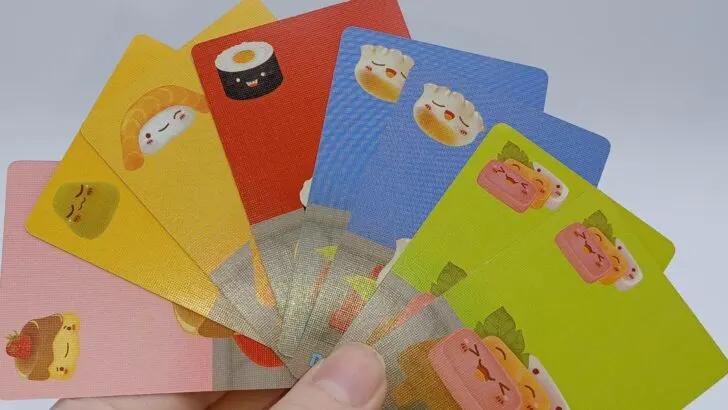
When everyone has chosen their card, all of the players reveal their chosen card at the same time. After you reveal your chosen card, you will play it face-up in front of yourself.
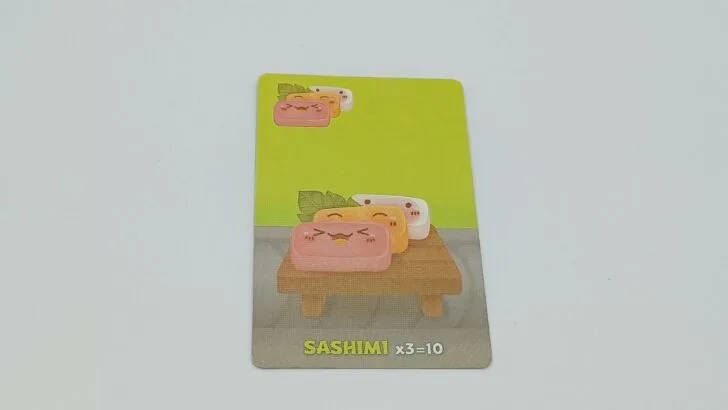
All of the players then pass all of the cards remaining in their hand to the player on their left. From this new hand you will choose another card to keep. Once everyone has chosen their next card, you will reveal the cards in the same way as the previous card.
End of Round
The players will keep passing their hand to the player on their left and then choosing a new card from their new hand. This continues until all of the cards from each hand have been chosen. Each player will then score the cards that they chose throughout the round. The one exception are Pudding cards which the players score at the end of the game. See the Cards of Sushi Go! section below for details on how to score each type of card. Each player records their score to keep track for the end of the game.
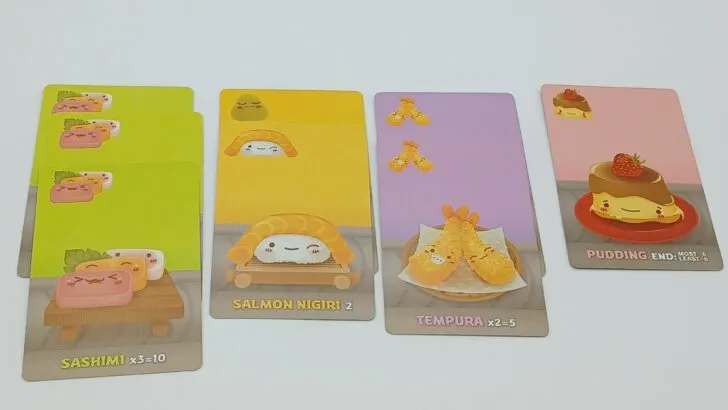
After each player has scored their cards, you will discard the cards from the last round. Players will keep the Pudding cards they took during the round as they will score points for them at the end of the game.
To start the next round deal each player the same number of cards as the beginning of the game. The game ends after the third round is completed.
Cards of Sushi Go!
Each card in Sushi Go! has its own unique way of scoring. How you score points for each type of card is detailed below.
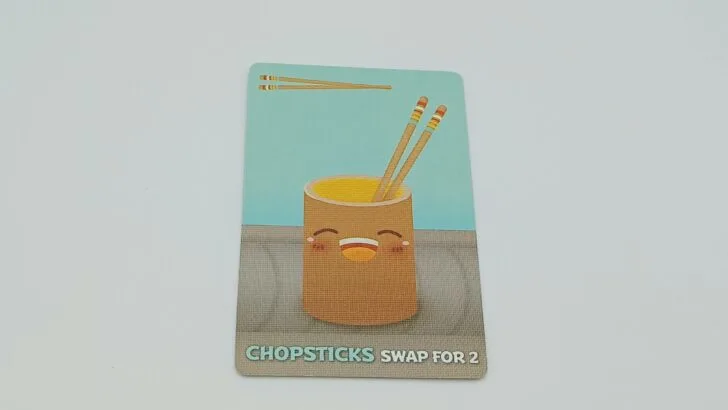
Chopsticks
Chopsticks are a unique card in Sushi Go! because you don’t score any points from them.
When you acquire a Chopsticks card, you can use it on a later turn. If you see two cards in a future hand that you like, you can use your Chopsticks card to take two cards from the hand instead of one. You will first take one card from the hand. Before everyone reveals their choice, you will call out “Sushi Go!” and take the second card that you want. All of the players then reveal the cards they chose to keep.
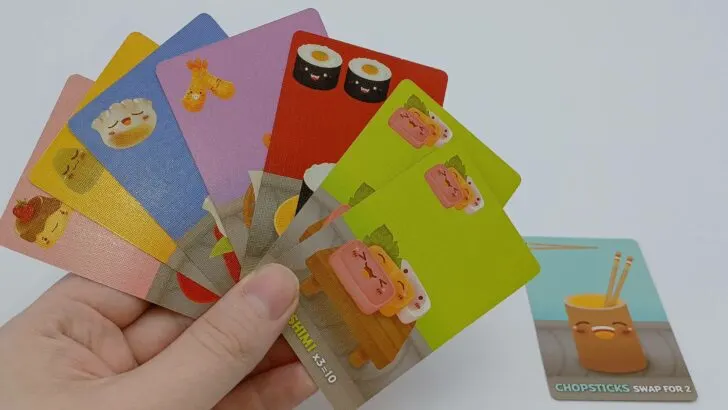
In exchange for taking a second card, you will return the Chopsticks card to your current hand before passing it to the next player. Another player can take the Chopsticks card and use it in a future turn to take two cards on their turn.
You may end up collecting multiple Chopsticks cards, but you can only use one each turn.
At the end of the game Chopsticks are worth zero points.
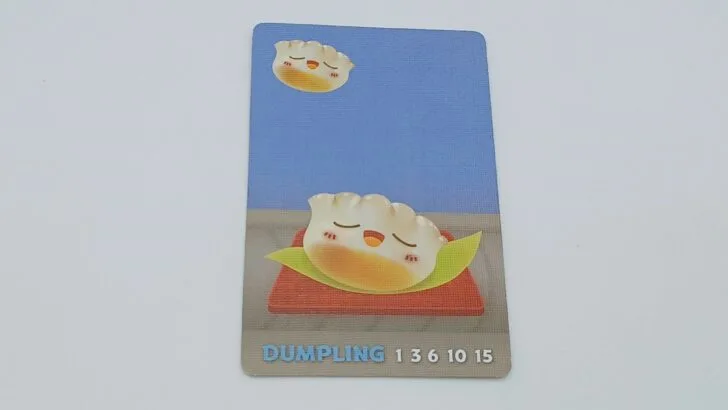
Dumpling
The more Dumpling cards you collect, the more points you will score. You will score points from Dumpling cards as follows:
- 1 Dumpling – 1 point
- 2 Dumplings – 3 points
- 3 Dumplings – 6 points
- 4 Dumplings – 10 points
- 5+ Dumplings – 15 points
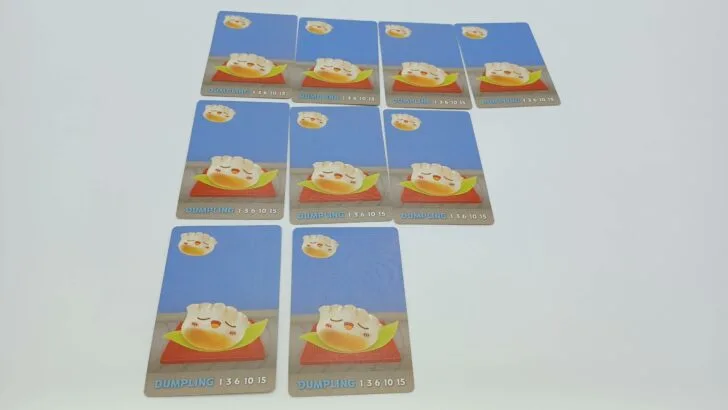
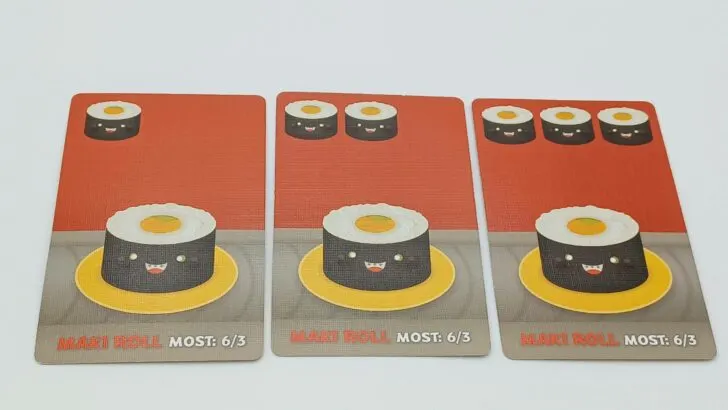
Maki Rolls
You will score points for Maki Rolls based on how many Maki Rolls the other players collected during the round. Only the player that collects the most or second most Maki Rolls scores points for them.
At the end of a round all of the players count up how many Maki Rolls they have pictured on their cards. You will count up the number of pictured Maki Rolls, not the number of cards. For example a card that shows three Maki Rolls counts as three Maki Rolls not one card.
The player who collected the most Maki Rolls in the round scores six points. If multiple people tie for the most Maki Rolls they split the six points as evenly as possible ignoring any remainder. In this case no one will score points for the second most Maki Rolls.
If there wasn’t a tie for most Maki Rolls, the player with the second most Maki Rolls gets three points. If there is a tie for the second most Maki Rolls, the tied players share the points and any remainder is ignored.
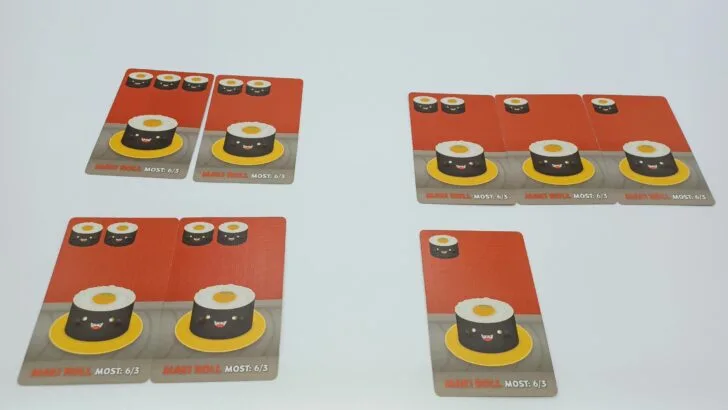
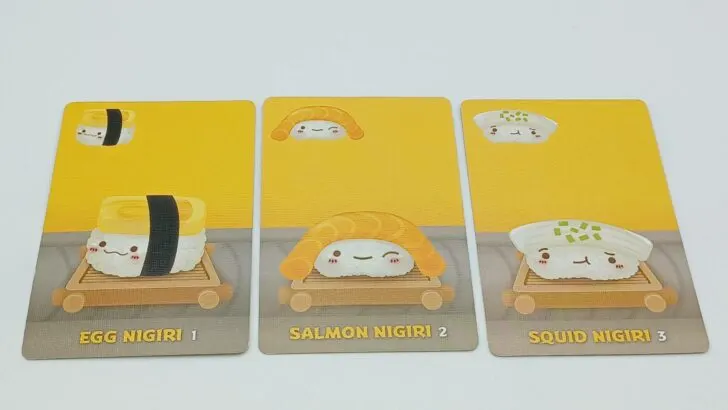
Nigiri
Nigiri cards are by themselves worth the number of points printed on the card. If you play a Nigiri card on top of a Wasabi card though, it will triple the score. See the Wasabi section below for more details.
- Egg Nigiri – 1 point, 3 points with Wasabi
- Salmon Nigiri – 2 points, 6 points with Wasabi
- Squid Nigiri – 3 points, 9 points with Wasabi
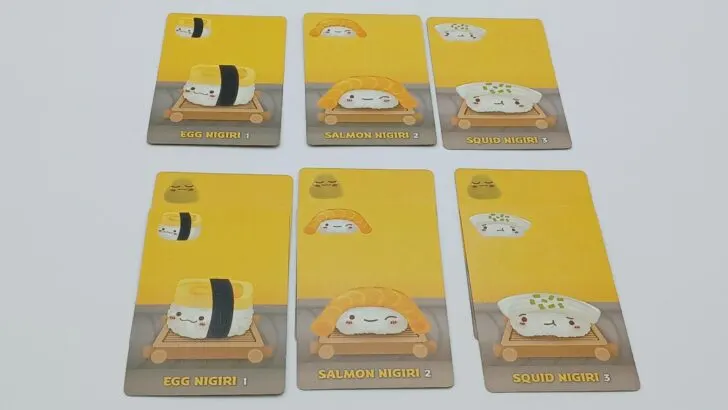
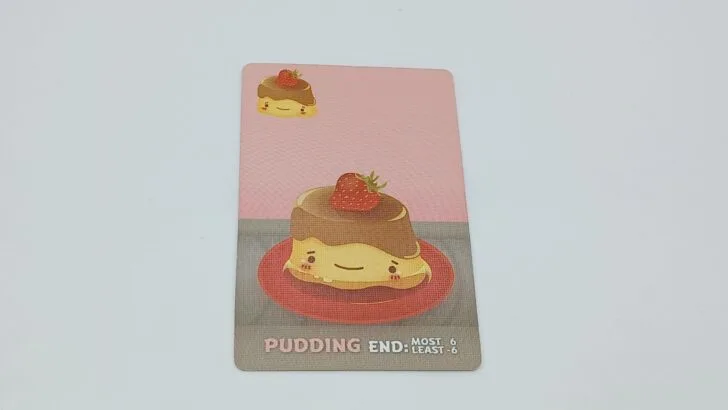
Pudding
Pudding cards are unique in that they are only scored at the end of the game. At the end of each round you will keep the Pudding cards you chose instead of discarding them like the rest of your cards.
At the end of the game each player counts up how many Pudding cards they collected during the game. The player that collected the most Pudding cards scores six points. If there is a tie for most Pudding cards, the tied players split the six points as evenly as possible. Any remainder is ignored.
The player that collected the least Pudding cards loses six points. This includes players that collected zero Pudding cards. If there is a tie for the least Pudding cards, the tied players split the six points as evenly as possible. Any remainder is ignored.
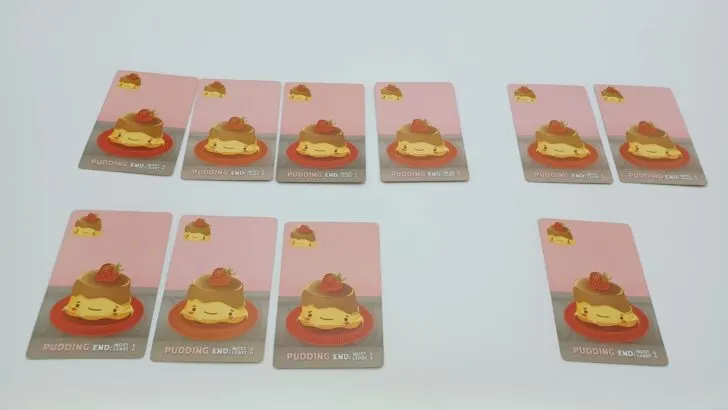
If somehow all of the players collected the same number of Pudding cards, no one scores points for Pudding cards.
In two player games only the player with the most Pudding cards scores six points. The other player does not lose points.
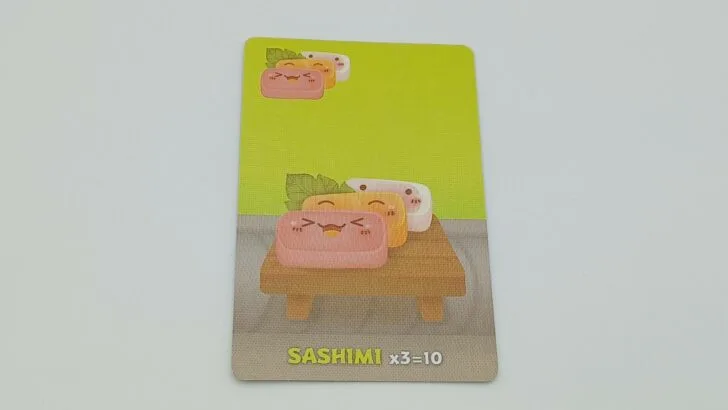
Sashimi
Sashimi cards score points in groups of three. For each three Sashimi you collect in a round, you will score ten points. You can complete multiple sets of Sashimi cards to score ten points per set.
Any Sashimi cards not in a set of three are worth zero points.
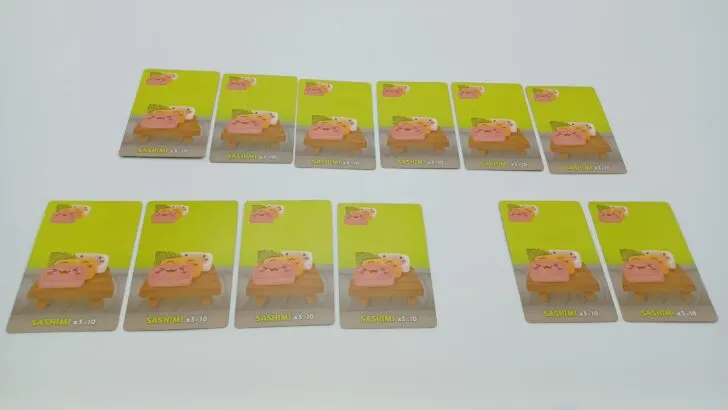
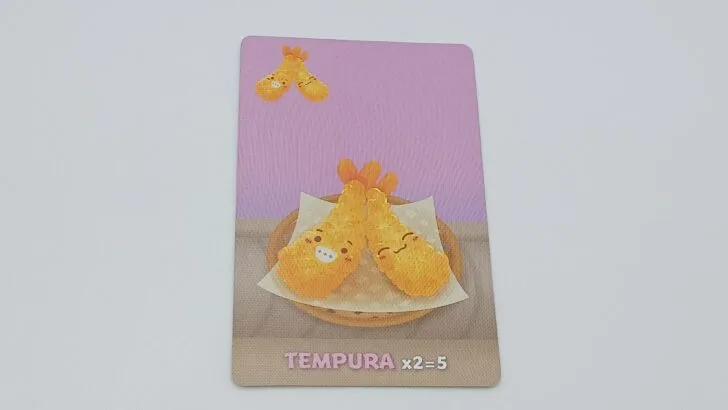
Tempura
Tempura cards score points in pairs. For each two Tempura cards you have, you will score five points. You can score multiple pairs of Tempura cards.
Any Tempura card that isn’t paired with another Tempura card is worth zero points.
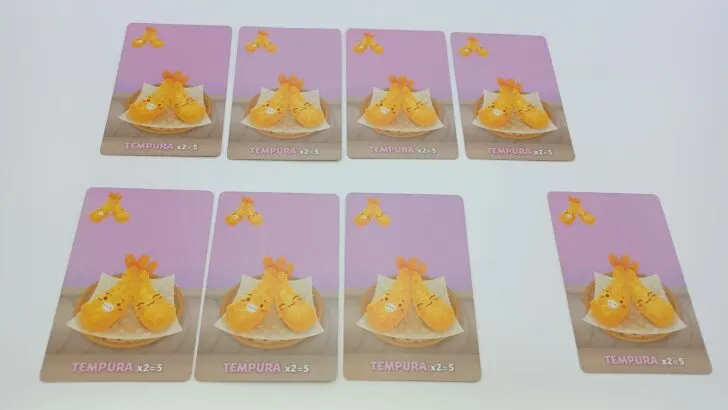
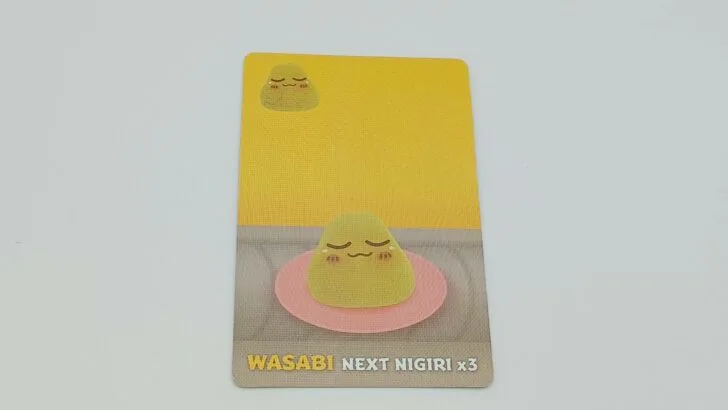
Wasabi
When you acquire a Wasabi card you will place it in front of you. You cannot place it on a Nigiri card that you previously collected.
After acquiring a Wasabi card, the next time you acquire a Nigiri card (Egg, Salmon or Squid), you will immediately place it on top of the Wasabi card. This is not optional. For example you cannot acquire an Egg Nigiri (worth one point), and choose not to place it on the Wasabi. You do not have to acquire a Nigiri card on the turn after acquiring the Wasabi card. It could be several turns before you acquire a Nigiri card. Whenever you acquire the next Nigiri card though, you will add it to the Wasabi.
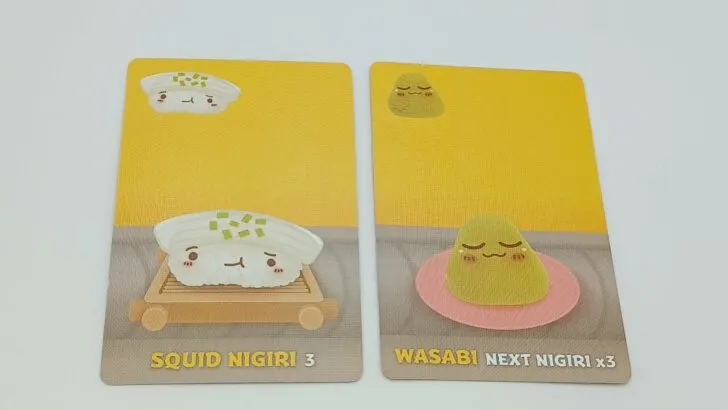
A Wasabi card by itself is worth zero points. If you attach it to a Nigiri card, it will triple the points that the Nigiri would normally be worth.
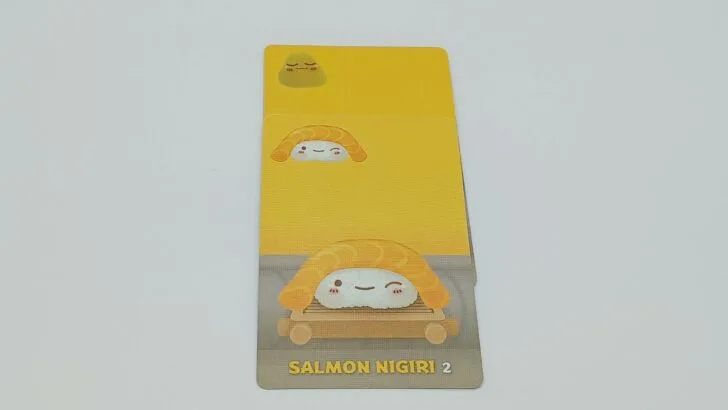
Winning Sushi Go!
The players will score the cards they collected in the third round like the previous two rounds.
You will then score all of the Pudding cards collected during the game. See the Pudding card section for more details.
Each player tallies the points they scored from all three rounds plus Pudding cards. The player that scored the most total points wins the game. If there is a tie, the tied player with more Pudding cards wins.
Sushi Go! Variants
Pass Both Ways
Sushi Go! is played mostly the same with this variant. The one difference is that each round the players alternate which way they pass their hands. In the first and third rounds, players will pass their hands to the left. In round two they will pass their hands to the right.
Two Player Variant
You can play Sushi Go! two player using the normal rules. This variant is an additional way that you can play the game with only two players.
This variant features a third “dummy” player. For each round all of the players are dealt nine cards.
Players will take turns controlling the dummy player. You will choose which player will control the dummy player to start the round. When it is your turn to control the dummy player, you will take the top card from the dummy player’s pile and add it to your hand. You will choose one card from your hand for yourself, and one card for the dummy player. The rest of the game is played like the normal game.
Sushi Go! FAQs
If you have any questions about how to play Sushi Go!, leave a comment below on this post. I will try to answer any questions asked as best and as quickly as possible.
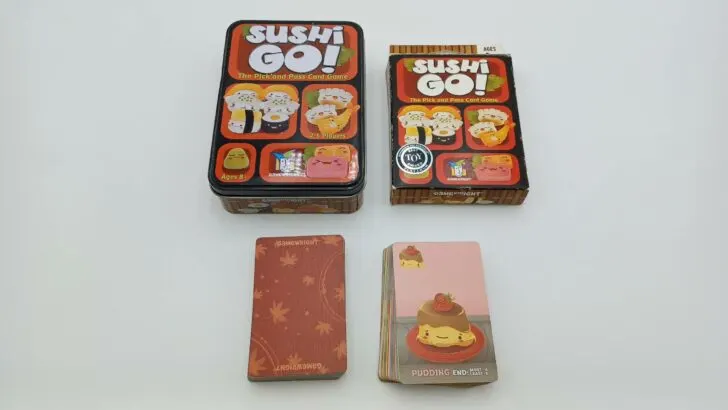
Sushi Go! Components
- 108 Cards
- 4 Chopsticks
- 14 Dumpling
- 5 Egg Nigiri
- 12 2 Maki rolls
- 8 3 Maki rolls
- 6 1 Maki rolls
- 10 Pudding
- 10 Salmon Nigiri
- 14 Sashimi
- 5 Squid Nigiri
- 14 Tempura
- 6 Wasabi
- Instructions
For my thoughts on the game, check out my Sushi Go! review.
Year: 2013 | Publisher: Gamewright | Designer: Phil Walker-Harding | Artist: Nan Rangsima, Tobias Schweiger, Phil Walker-Harding
Genres: Card, Family, Set Collection
Ages: 8+ | Number of Players: 2-5 | Length of Game: 15-20 minutes
Difficulty: Light | Strategy: Light-Moderate | Luck: Moderate
Where to Purchase: Amazon, eBay Any purchases made through these links (including other products) help keep Geeky Hobbies running. Thank you for your support.
For more board and card game how to plays/rules and reviews, check out our complete alphabetical list of board game posts.

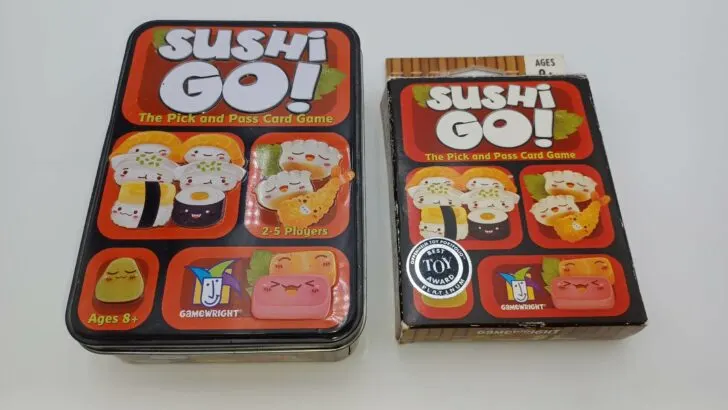
Sushi Go! Card Game Review - Geeky Hobbies
Thursday 22nd of June 2023
[…] If you would like to see the complete rules and instructions for the game, check out our Sushi Go! how to play guide. […]
Jean
Monday 26th of August 2019
When each game only has 3 rounds how do you get 5 or more dumplings?
Eric Mortensen
Tuesday 27th of August 2019
This confusion is probably due to me not doing a great job describing what constitutes a round. At the beginning of each round the players start with the number of cards shown in the setup section (between seven and ten). Players take one card and then pass the cards to the player on their left. This continues until all of the cards have been claimed by players. This is the end of the round. You are able to get five or more dumplings in a round because each player will get to take between seven and ten cards each round (depending on the number of players).
Then another round is played with players being dealt the same number of cards as they were at the beginning of the game. Players will once again take cards until all of the cards are taken. One more round is then played and then the game ends.
I am sorry that you were confused by my description of the rules. I am going to edit them some to make this more clear.
John Slotta
Sunday 4th of March 2018
Thanks!